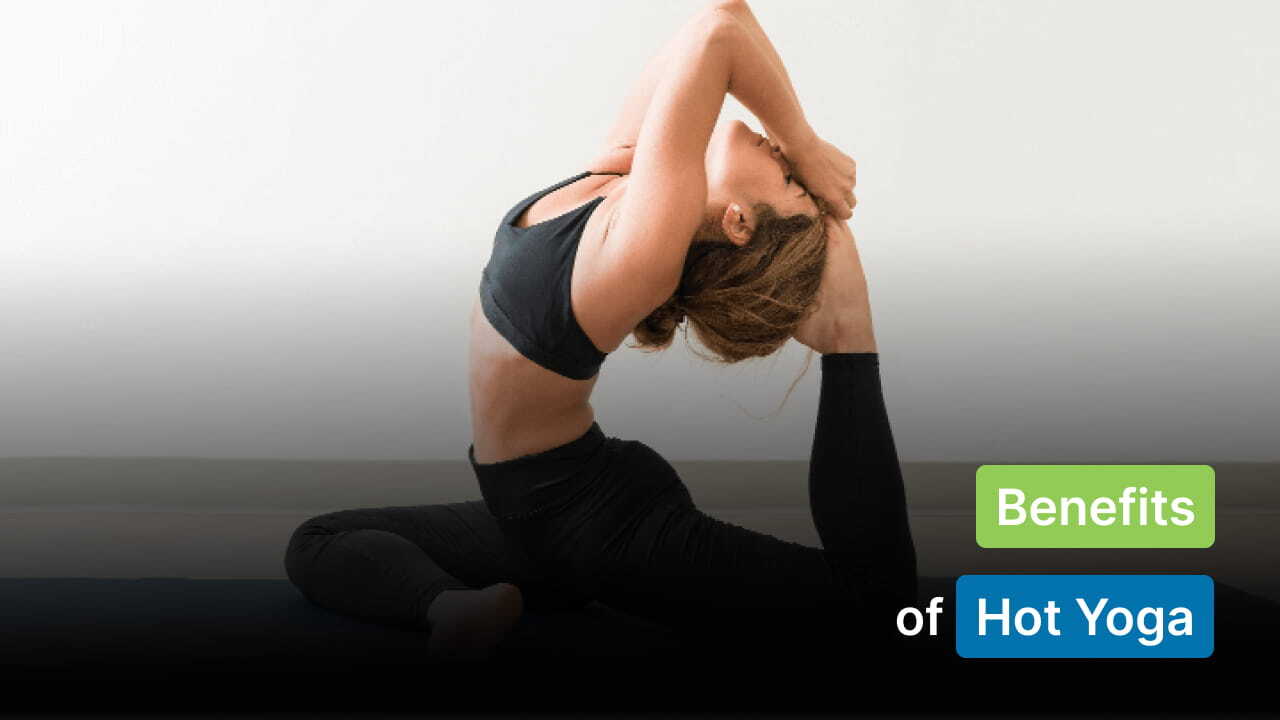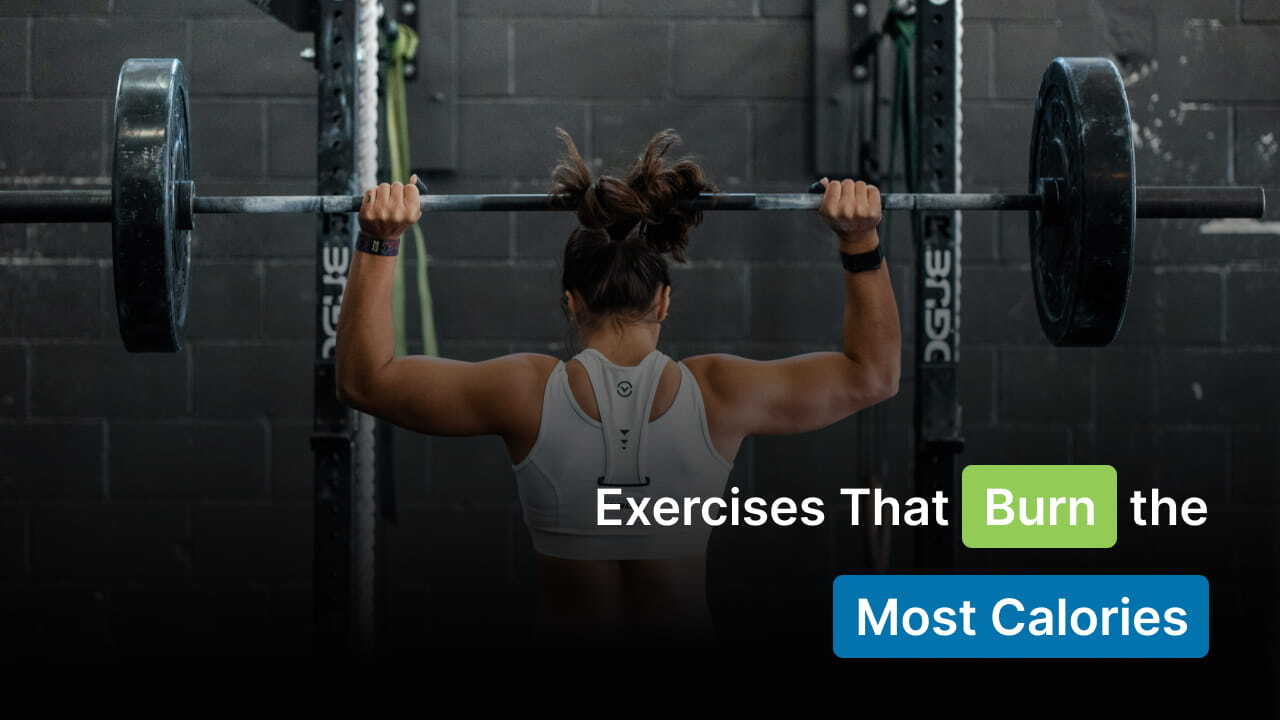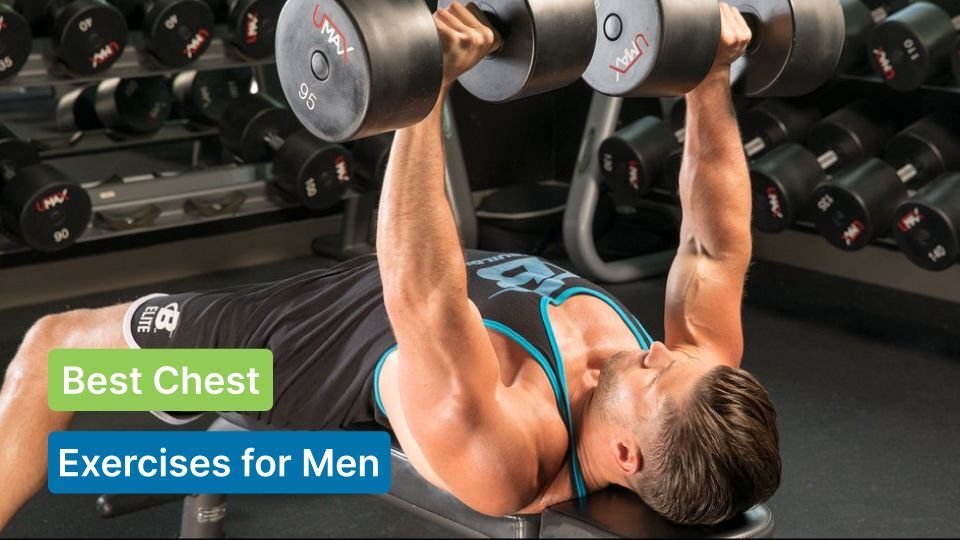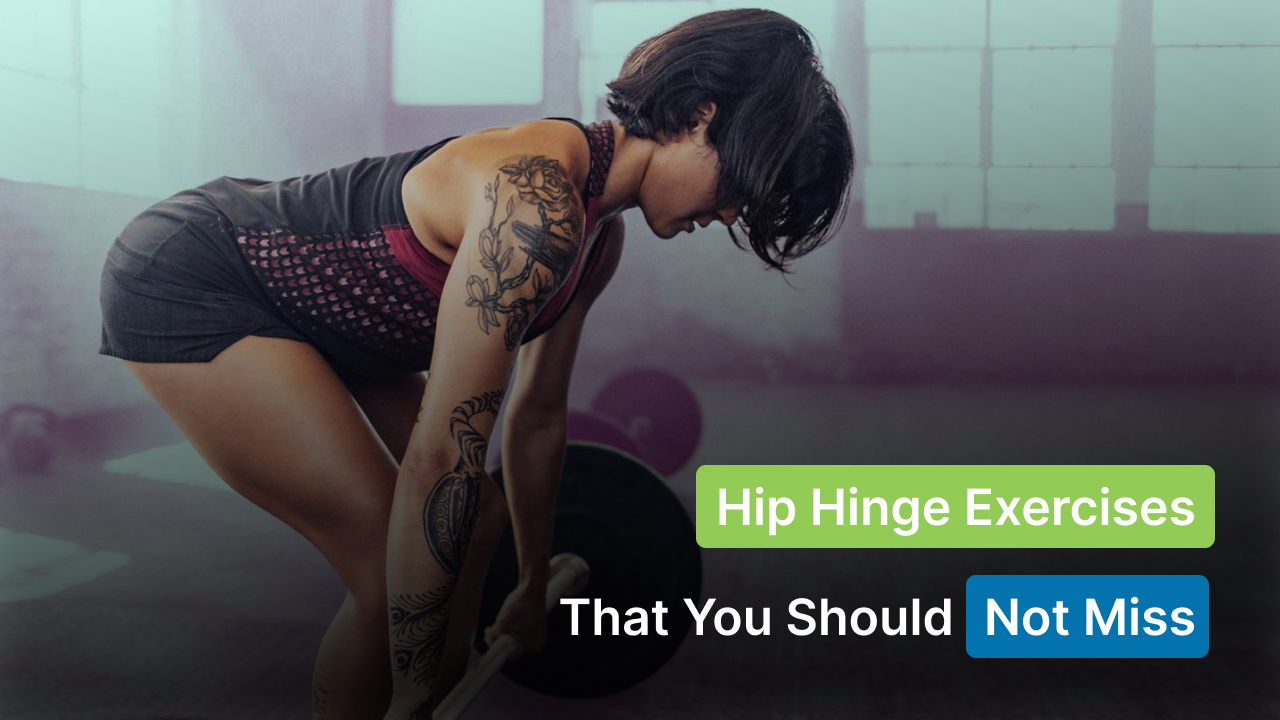
When we think about fitness, it's common to focus on achieving that coveted six-pack or sculpted arms. However, one critical component of overall fitness and strength often gets overlooked – the upper back body.
Having a muscular and strong upper body is something that many fitness enthusiasts dream of. That’s why they mostly focus on upper back exercises whenever they go to the gym. A well-developed upper body increases your overall physical appearance and improves your functional strength.
But why do these people target their back muscles first? This is because the upper back plays an important role in stabilizing the shoulder girdle and spine. And, building a strong upper back is key to overall strength.
This blog explores the 13 best upper back exercises you can consider as a part of your fitness routine. It also discusses the importance of back exercises to help you get started.
What Muscles Make Up the Upper Back?
Our upper back is made of five key muscles. Before starting any workout, you must first understand them clearly.
These five muscles collectively contribute to the strength and stability of the upper back. They are:
Real deltoids (Posterior) – The rear delts are located at the back of your shoulder and provide shoulder stability and upper back strength. They also play a key role in pulling.
Trapezius (Traps) – Trapezius is a vast, flat, and triangular-shaped muscle on both sides of the upper back. Yes, those triangular shapes are traps! It consists of 12 thoracic vertebrae. It is responsible for shoulder blade movement, neck stability, as well as upper back support. They also help maintain a good posture.
Rhomboids – These muscles consist of two muscles namely: the rhomboid major and rhomboid minor. They are found between the shoulder blades and help in scapular retraction.
Erector spinae – These muscles run along the spine and are essential for maintaining an upright posture. They are also called spinal erectors. Erector spinae muscles work with the glutes to help in standing or sitting.
Latissimus dorsi (Lats) – The lats are responsible for various upper body movements, especially pulling. They are known to be the largest muscle in the upper body and their role is upper extremity movement.
Why are Upper Back Exercises Important? – Know the Benefits
There are numerous benefits of back training that are pretty self-evident.
Some of the advantages of upper back exercise include:
i) Helps in improving posture
Poor posture is a very common problem in today's sedentary world, primarily due to long hours spent sitting at desks and looking at screens. This, in turn, leads to being under-confident. And no one wants that whenever they look at themselves in the mirror.
Therefore, strengthening your back to have a good posture is very important.
Back exercises strengthen the muscles which are responsible for pulling the shoulders back and down. This, in turn, reduces the probability of slouching or hunching, leading to better posture.
ii) Stronger and balanced body
A big chest looks funny and weird without a big upper back and shoulders. Similarly, your abs are part of your core, whose role is to support your spine. As a result, your mid and lower back need equal attention for better function and aesthetics.
iii) Helps you strengthen your muscles
Upper back exercises target key muscle groups like traps, lats, rhomboids, and deltoids, leading to increased muscle strength. Strong upper back muscles improve your overall physical capabilities, support good posture, and reduce the risk of injury, thereby contributing to your overall health, fitness, and well-being.
iv) Helps in establishing V-taper
Are you aiming at having a V-shaped torso? It's not that easy. For that, you need to focus on training your back muscles.
Upper back exercises play a great role in establishing the coveted V-taper physique that many men dream of. Strengthening the upper back muscles, especially the lats, rhomboids, and traps, creates broader and more defined shoulders and a narrower waist.
v) Allows for weight progression
As you consistently work on these workouts, you can gradually increase the amount of weight and resistance. To help you reach your upper body strength and fitness goals, the progressive overload approach tests your muscles, allowing them to grow and adapt over time.
vi) Reduced risk of injuries
Upper body exercises help to build muscles and strengthen connective tissues and bones. This added stability can protect you from strains, sprains, and fractures.
Now, let's move on to the most interesting part of the blog.
13 Best Upper Back Exercises for Body Strength
There are a plethora of back exercises available today. Here, we will go over just a few common exercises you can integrate into your fitness training routine to build a strong back.
1. Bent-over Row
First up on our list is the Bent-over row workout.
It is called the king of back exercises for a reason. This is because this workout can be done with any equipment, be it kettlebells, barbells, or dumbbells; you can row with any of these. The best part is that it can be done on a cable machine.
A bent-over row workout strengthens the upper back, biceps, shoulders, and grip. They are great for targeting the upper back, traps, and rear deltoids.
How to do:
- Hold a barbell or dumbbell in each hand in front of you with a slight bend in your knees.
- Hinge at the hips, keep your back straight, and pull the weights towards your abdomen.
- Lower them back down and repeat for reps.
- Perform three sets of 12 reps.
2. Pull-ups
Pull-ups are a must-compound exercise if your goal is to develop a V-shaped torso. They build width since they trigger your latissimus dorsi, the big back muscles that wrap around the sides of your upper body. These muscles play a major part in building the torso.
If you're a beginner, assisted pull-up machines or resistance bands can help you progress.
How to do:
- Hang from a pull-up bar keeping your palms facing away from you.
- Use your back and arm muscles to pull your body upward until your lower jaw or chin is above the bar.
- With control, return to your lower position.
Variations like wide-grip and close-grip pull-ups target different muscle groups, making this workout versatile and challenging.
3. Seated Cable Rows
Seated cable rows are an excellent gym machine exercise for building upper body strength. This workout primarily targets your middle and lower back muscles, along with your biceps and shoulders.
How to do it:
- Sit on the cable row machine with your knees slightly bent.
- Use a V-bar attachment to pull the handle facing your lower abdomen while squeezing your shoulder blades together.
4. Inverted Row
The inverted row, aka body row, is another way for weight-lifting beginners to build up both their back strength and their overall body control. They are a great alternative to pull-ups and may be easily scaled for different fitness levels.
How to do:
- Set a barbell on a squat rack at roughly waist height.
- Lie on your back and grab the bar or handles with an overhand hold.
- Keeping your body straight, raise your chest up towards the bar.
5. Upright row
The upright row, also known as the high pull, is a vertical pulling workout for upper back muscles, unlike bent-over rows and wide-grip rows, which are horizontal pulling exercises.
How to do it:
- Begin by standing with your feet shoulder-width apart.
- Hold a barbell or dumbbell in front of your thighs.
- Then, lift the weight vertically close to your body until it reaches chest height.
6. Push-ups
Push-ups are another classic exercise that works on multiple upper body muscles simultaneously. They target the chest, shoulders, and triceps and even engage the core.
Push-ups may look easy but it’s quite hard when you actually do it. Variations such as incline, decline, or one-arm push-ups may increase the challenge.
To perform a push-up:
- Start in a plank position and lower your body to the ground.
- Don't forget to keep your body straight.
- Push back up to the initial position.
- Do this for 10 reps.
7. Lateral Raises
Lateral raises are an isolation exercise that focuses on the lateral deltoid muscles in your shoulders. This workout is easy to perform and involves lifting weight away from your body to the sides.
Lateral raises also help in improving the range of motion (ROM) in your shoulders.
Here’s how to do it:
- Hold a dumbbell in each hand by your sides.
- Slightly bend your elbows.
- Raise your arms to the sides until they're parallel to the ground.
- Lower them back down with control.
8. TRX Row
TRX (Total Resistance Exercises) rows are another upper back exercise that you can perform using suspension straps. This workout mainly works on lats, traps, and rhomboid muscles.
Interestingly, TRX rows are highly flexible and can be modified by changing your body angle to increase or decrease resistance. This makes them perfect and suitable for all fitness levels.
How to do it:
- Adjust the straps to waist height and hold onto the handles.
- Lean back with your feet extended in front of you.
- Pull your chest towards your hands, engaging your back and arm muscles.
9. Face Pull
Face pulls are another back workout that targets the rear deltoid muscles and improves your shoulder health. Moreover, this workout helps to keep your shoulders squared. Face pull exercise is also helpful in correcting muscle imbalances and preventing shoulder injuries.
Here's how to perform face pull:
- With the help of a rope attachment on a cable machine, stand by maintaining a shoulder-width distance between your feet.
- Pull the rope towards your face while focusing on squeezing your shoulder blades together at the top of the movement.
- Perform this for two sets of 20 reps.
10. Barbell deadlift
The deadlift primarily targets your lower back, upper back, and grip strength, as well as glutes. This workout must be done carefully, especially if you’re a beginner.
Throughout this exercise, the back muscles do not immediately contribute to your range of motion (ROM) when performing deadlifts, but they do keep your spine safe.
To perform this exercise:
- Stand and maintain a hip-width distance between your feet.
- Hold the barbell with your hands a little broader than shoulder-width.
- Lift the bar by extending your hips and straightening your back.
11. Superman
You're pretty much out of options unless you do pull-ups or inverted rows, but if you can, try this amazing exercise that works your upper and middle back muscles.
This simple workout can be more difficult than it looks, so make sure you go slow and know what you're doing beforehand.
How to do it:
- Lie down on your stomach, arms and legs extended.
- Lift your arms and legs off the ground at the same time, squeezing your back muscles to mimic Superman's flying position.
12. Elevated Plank Row
The elevated plank row is a challenging back workout that combines the stability benefits of a plank with the upper body strength gained from rowing. This exercise engages your core, shoulders, and back, promoting total upper body strength.
How to do it:
- Set up two dumbbells, kettlebells, or other weighted objects at shoulder width.
- Assume a plank position with your hands on the weights.
- Alternate rowing one weight towards your hip while maintaining a stable plank.
13. Rack Pulls
Rack pulls are pretty similar to traditional deadlifts, but there's a slight difference. With rack pulls, you lift the barbell from an elevated position, which reduces the range of motion (ROM).
As a result, you rely less on your hamstrings and glutes for power, transferring the load predominantly to your back muscles.
How to do it:
- Set up the barbell on safety pins or blocks just below knee height.
- Stand with your feet hip-width apart,
- Grip the barbell with an overhand or mixed grip and lift it by extending your hips and standing upright. Lower the barbell back to the starting position.
- Maintain proper form and control throughout.
Warm-up Before & After Upper Back Exercises
Before each workout, don't forget to warm up your body with light aerobic exercises (e.g., jumping jacks or light jogging). You can also benefit from walking or cycling for 10-15 minutes.
This is because five minutes of warm-up will boost your blood flow to your muscles, which then prepare them for the upcoming workout and further reduce the risk of injury. The same goes for post-workout.
After completion, try to engage in a cool-down routine to help recover. Stretch your upper body muscles
to improve flexibility and minimize post-workout soreness.
Additionally, holding stretches for 15-30 seconds per muscle group will help relieve your muscle tension. And you’re good to go!
Final Reflection
As you can see, there are plenty of different upper back exercises to choose from. Strengthening your upper back has tons of benefits, including relieving back pain and overall health and fitness. As you progress, challenge yourself by adding more weight or resistance, but be cautious while doing them.
If you are a beginner, seek help from an expert or trainer. Never do it all by yourself. If you experience any pain and back issues while exercising, consult a healthcare professional or physical therapist.
FAQs
1. How do you build upper back strength?
Ans: To build your upper back strength, focus on compound exercises such as pull-ups, bent-over rows, and deadlifts, which target the upper back muscles. Try to include a mix of bodyweight and resistance training workouts to continuously challenge and strengthen the upper back muscles.
2. How can I strengthen my upper back without equipment?
Ans: Some of the ways you can strengthen your upper back without equipment are push-ups, pull-ups, inverted row workouts, Hip Hinge, and others. Apart from this, isometric exercises like elevated planks and Superman can also engage the upper back muscles.
3. What is the number 1 back exercise?
Ans: The bent-over row is the number 1 exercise for the upper back as it increases strength and muscle mass. Recent research indicates that this workout primarily activates three of the five back muscles.
4. Do pull-ups hit the upper back?
Ans: Yes, pull-ups are a great full-back workout. They mainly target the upper back muscles, including the lats and traps. They also engage in your core and arms and are considered the most effective back workout.
5. What is the king of all back exercises?
Ans: The barbell deadlift is considered the “king” of all back exercises since it engages the entire posterior chain while also exercising your lats and core.
Read Also:













